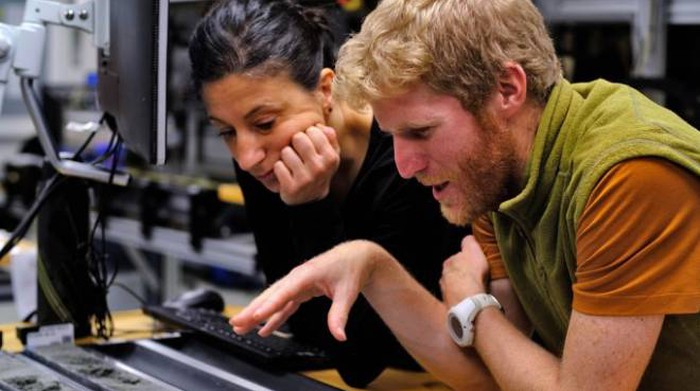
From New Zealand discovering the relationship between clay materials and earthquakes

Pisa, May 3, 2021 – Me Clay materials Of the faults in subduction zones, where the tectonic plate slides under another plate, and maintains a “waterproof” inside it, which means that it prefers earthquakes that are likely to cause tsunamis. This is the result of the study “Fluid pressure and seismic prevalence in the subduction zone of Hikurangi”, which was carried out thanks to the collaboration between the National Institute of Geophysics and Volcanoes, the University of Pisa and Padua and University College London on some samples from the Hikurangi region in New Zealand. The work has been published by Nature Communications.
Stefano Aretusini, INGV researcher and first author of the study, explains that “seismic slip occurring at shallow depths of the crust can lead to tsunamis and earthquakes. Given the experimental difficulties in deforming materials in these regions, the physical processes that reduce the thrust resistance that The researcher continues analyzing the behavior of samples taken in the subduction zone at Hikurangi in the laboratory, “We discovered that the existing clays tend to have low resistance to seismic forces due to the pressure of the water that they keep inside.”
To study the behavior of these pugs from the fault, researchers conducted Experiments On the numerous samples collected during the “Integrated Ocean Drilling Program 375” international drilling campaign carried out in 2018 off the North Island of New Zealand, which was attended by Professor Francesca Menegine of the University of Pisa, second author of the published work. In detail, rock samples inside the rift were smashed.
The powders were tested in INGV’s High Pressure and High Temperature (HP-HT) laboratory with an advanced device, SHIVA (Slow to High Speed Device) funded by the European Research Council in a project by Giulio de Toro, of the University of Padua and co-author of these. The study, and reproduces the earthquake “engine” (the rift), allowing us to observe what happens inside the earth’s crust and the deformations suffered by rocks under very strong pressures. Inside SHIVA, the powders were analyzed through a new method that allowed water to be retained inside as they were deformed at typical earthquake velocities.
Through control tests conducted on a material of known properties, Carrara marble powder, the researchers came to the conclusion that these clays prefer fault seismic flow due to their ability to retain water, a property that makes them “ weaker ”. “When I decided to participate in the oceanographic expedition – says Francesca Menegine – I immediately contacted my colleagues from INGV and the University of Padua, with whom I have been collaborating for years, and I am sure it was a unique opportunity to test the new experience of a technology developed at the institute and to make an additional contribution. For our knowledge of seismic phenomena. ” “Subsequent developments of this research – Stefano Aritocini concludes – will be to analyze in the same way other types of materials sampled during the mission to try to understand which of them might favor the seismic vibration process once it reaches the subduction zone.”
A.m
© All rights reserved

“Reader. Travel maven. Student. Passionate tv junkie. Internet ninja. Twitter advocate. Web nerd. Bacon buff.”
